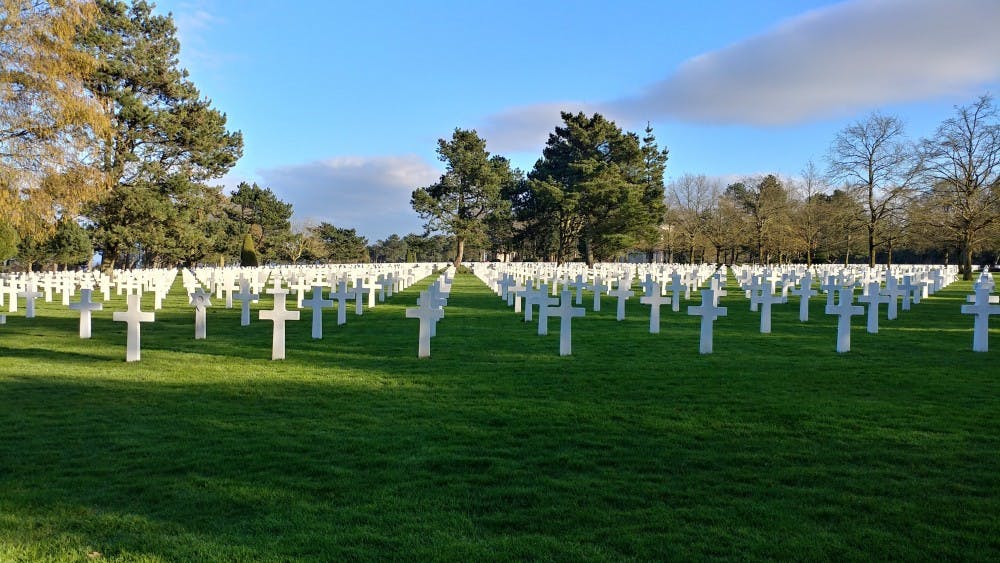After two full weeks of classes, I had winter break part two.
I am honestly so confused why they have a break this soon into the semester, but I didn’t question it. On Feb. 17, my father came to France, and we went up north to Normandy on Feb. 19.
This was my first time navigating the French train system, and I was doing it on very little sleep because our train came at around 5:30 a.m. Passengers don’t usually know which platform they need to be on until 20 minutes before the train is supposed to come. Also, the trains don’t stop for long, at all. I think our train stopped for all of five minutes.
We had to take a train up to Paris (my first time in Paris, actually), switch train stations and then go on a train west to Normandy, specifically Caen.
Normandy played a huge role in World War II because it’s where the Allies invaded the Nazi-occupied France. My dad and I were there to see the D-day beaches and everything surrounding it.
On our first full day in Normandy, we started at Gold Beach, which is where the British launched their invasion from. Then we moved our way up to Omaha Beach, which is where the U.S. invaded. It’s also where the U.S. military cemetery is.
The American Cemetery in Normandy is technically American soil — and the American flag flies above it.
There’s a quote by General Mark W. Clark on one of the walls: “If ever proof were needed that we fought for a cause and not for conquest, it could be found in these cemeteries. Here was our only conquest: all we asked was enough soil in which to bury our gallant dead.”
Stepping into the cemetery and seeing rows upon rows of graves stunned me. Many of the graves were crosses for Christianity, but I also saw quite a few Stars of David.
I was born in St. Louis, Missouri but grew up in Overland Park, Kansas. My dad and I found two graves side by side from Kansas and Missouri, father and son.
The next day, we drove to the town of Bayeux and saw a memorial to reporters. There were white pillars with years and names. The years start after World War II and end in 2017, and I’m assuming it will continue in 2018. The names underneath are all the reporters who died during that given year.
My dad didn’t seem at all freaked out by all the names, despite his own daughter hoping to become a journalist. But he wouldn’t let me take a picture next to the statue dedicated to the missing journalists.
The next day, we headed back on the train. We didn’t have as much time to switch train stations in Paris as we did last time. Seven minutes before we were supposed to be on a train back to Lyon, we didn’t know where we were. We ended up running to our train, bags swinging and hearts racing. We jumped into the first car on the train just as the doors closed.
After our heart rate slowed back down to a normal pace, we found our seats and our way back to Lyon.
Reach the blogger at anbuechl@asu.edu or follow @alexa_buechler on Twitter.
Editor’s note: The opinions presented in this blog are the author’s and do not imply any endorsement from The State Press or its editors.
Like The State Press on Facebook and follow @statepress on Twitter.





